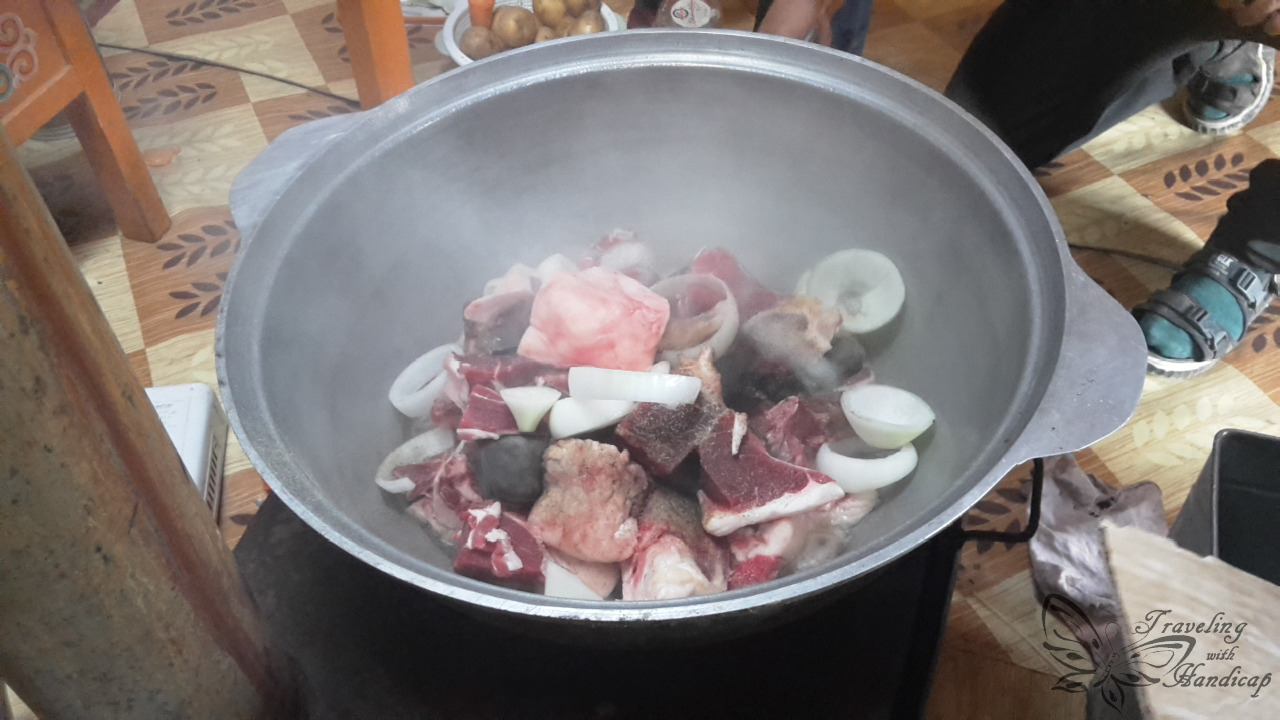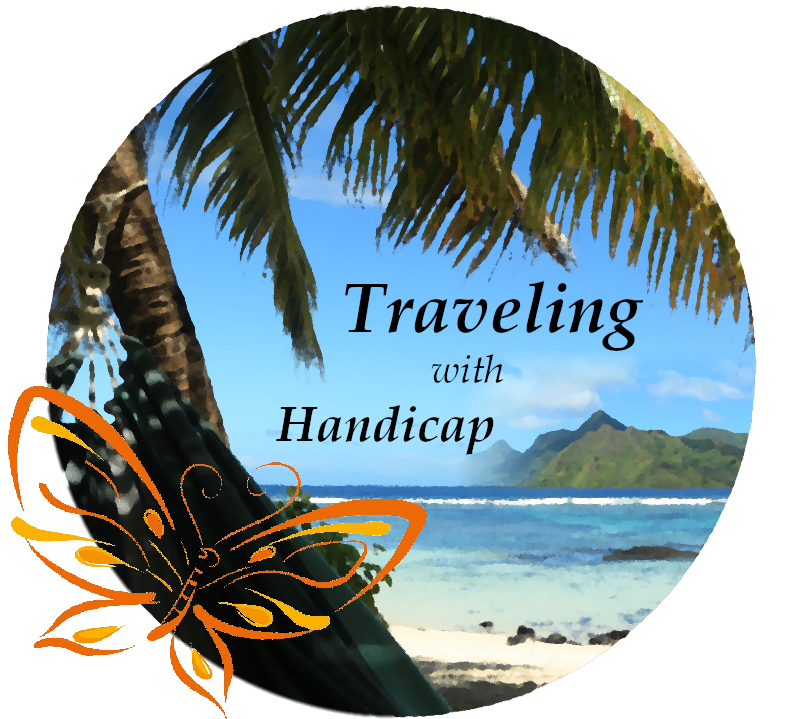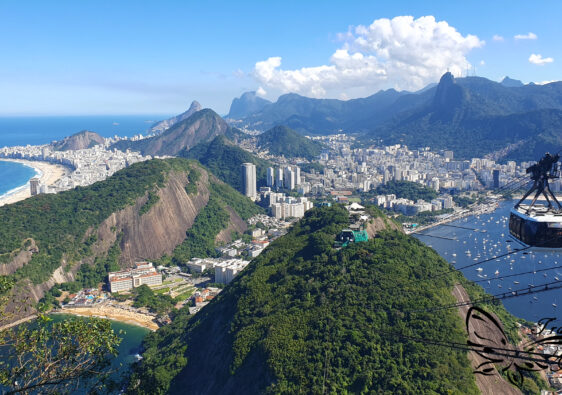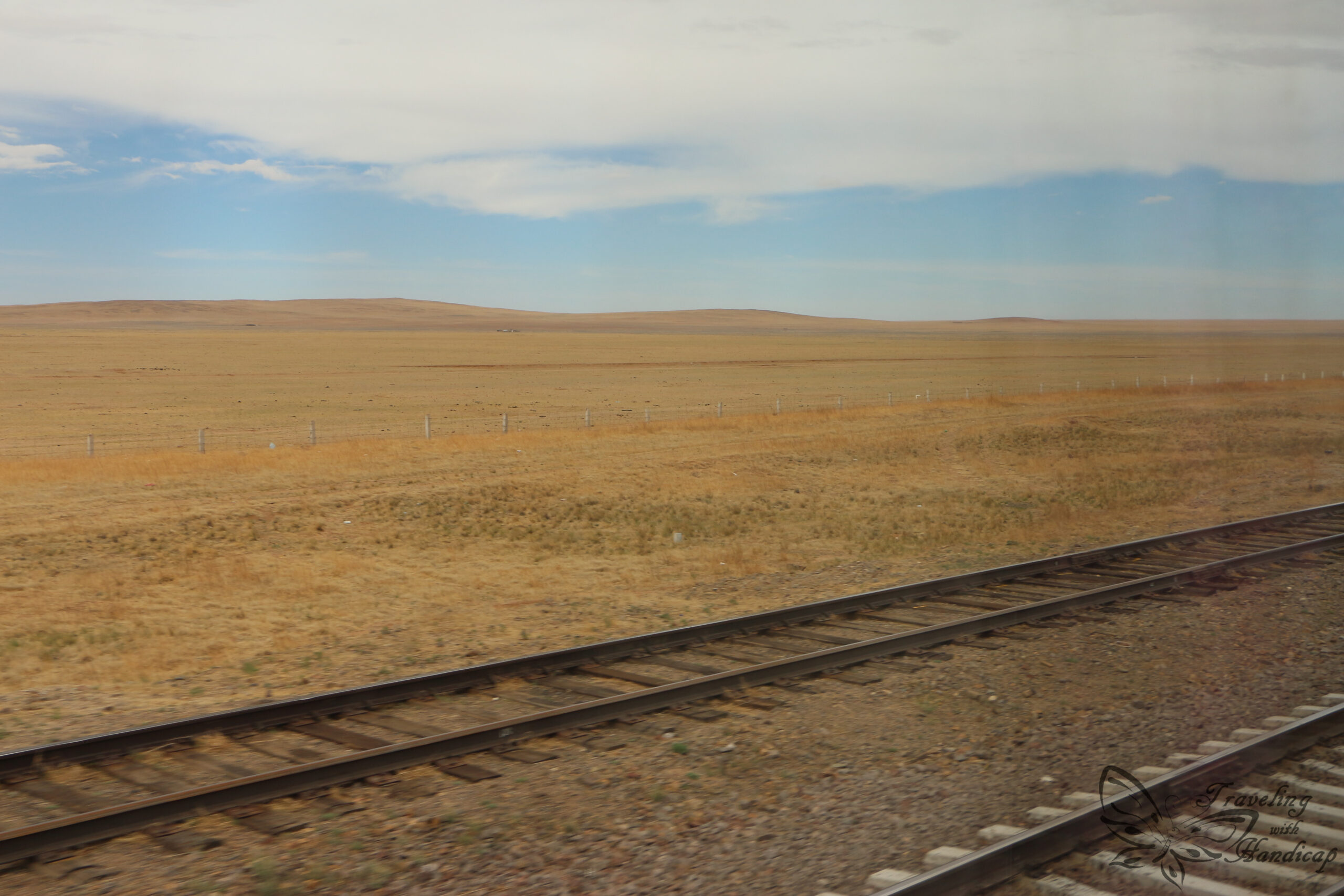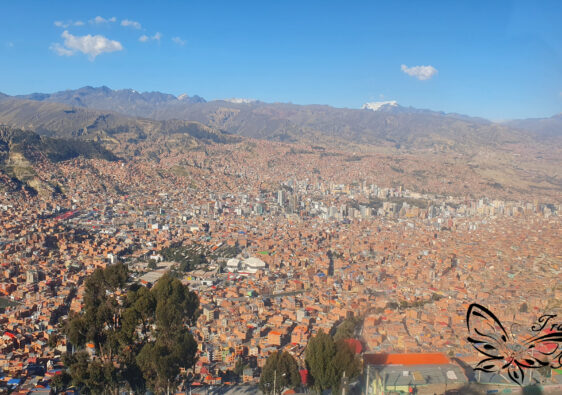People take different roads seeking fulfillment and happiness.
Just because they’re not on your road doesn’t mean they’ve gotten lost.
— Dalai Lama —
Touring around Mongolia by an organized tour
I would like to refer you to the article on the Gobi for information regarding tour providers and my provider Sunpath Mongolia. The mentioned article also contains my recommendations for a packing list. Moreover, I provide information regarding accessible travel in both the Gobi and Central Mongolia.
Within this article, I will take you to beautiful sights in Central Mongolia. Furthermore, I would like to share some experiences with Mongolian food. Remark: If you do not eat meat too often, request vegetarian food before booking a tour. Some tours such as Sunpath Mongolia take care of all your dietary requirements, there are other tour providers who don’t care much. If you don’t call yourself a vegetarian, you will be provided meat for breakfast, lunch and dinner, on a daily basis. Also, Mongolians like to eat spicy, mention it if you are sensitive to spicy food.
The Tour
After visiting Ongiin Chiid, the last stop within the Gobi, we had to say goodbye to three people of our group of seven. These three went back to Ulaanbaatar to leave Mongolia. We didn’t know each other before the tour, though, after sharing food, Gers, and outhouses for 5 days, the farewell was quite difficult for all of us. As a group of four tourists, Vampy as our guide and the driver of our Russian van, we continued to explore Central Mongolia.
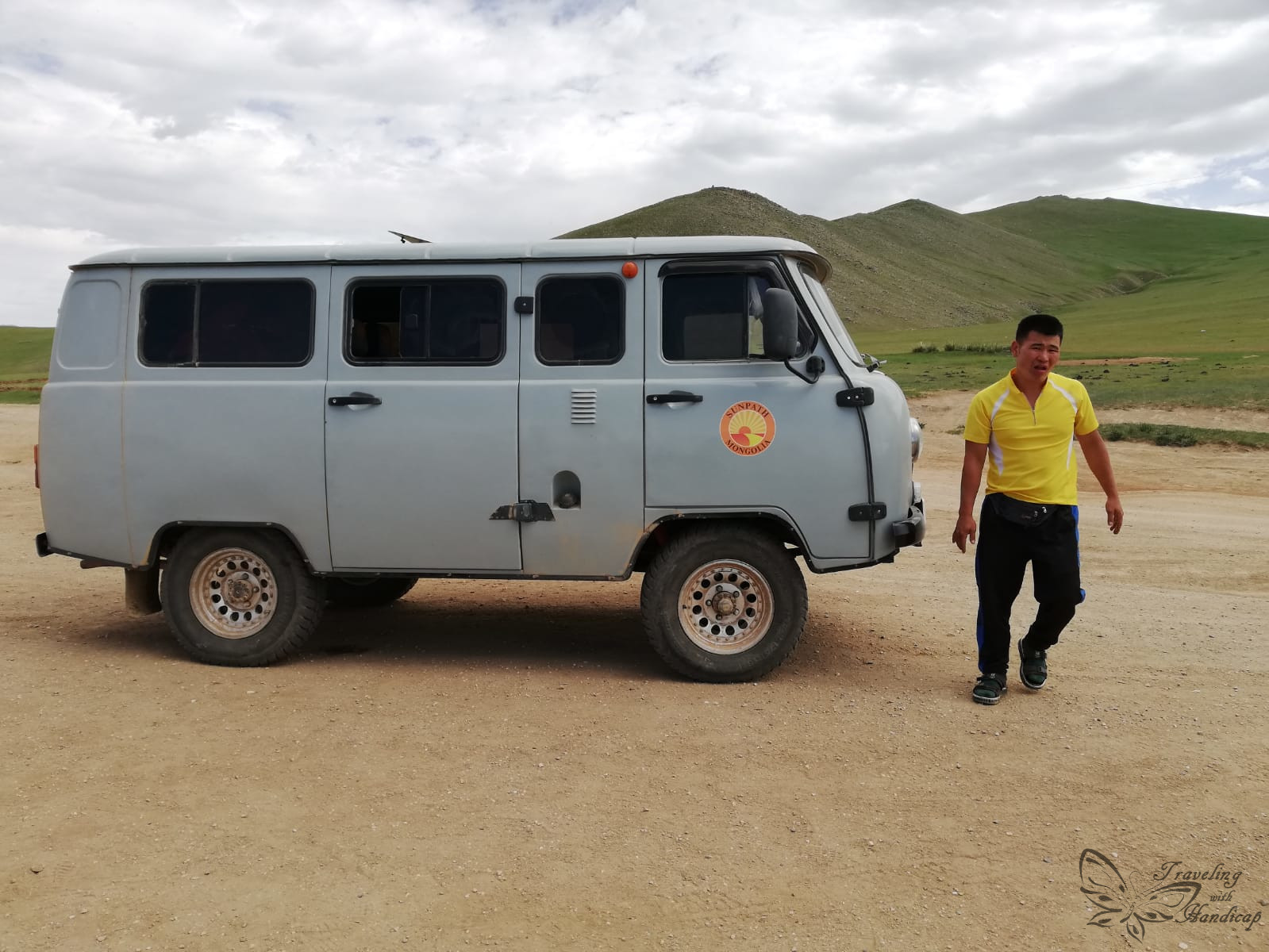

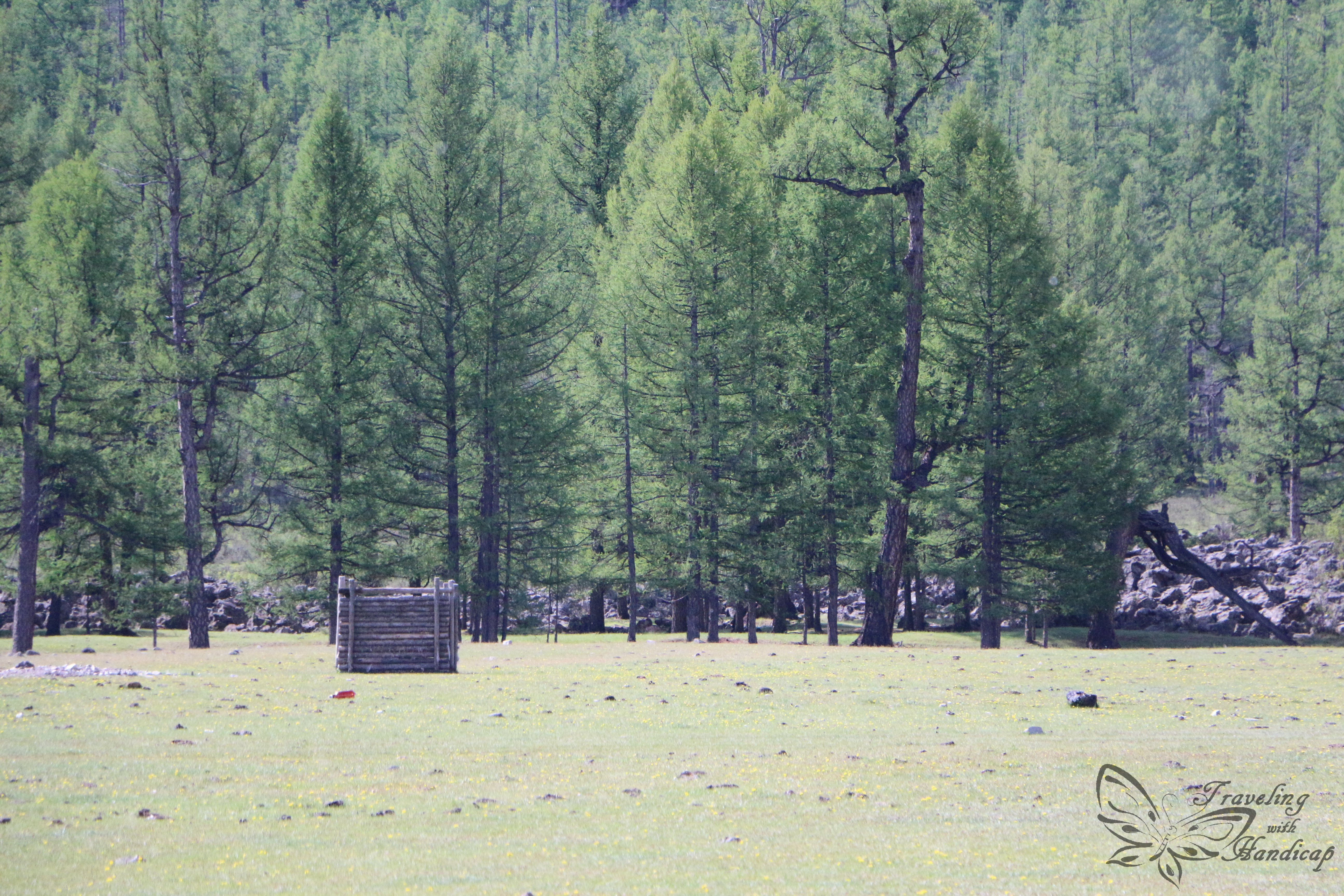
Natural Sights and stops
Orkhon Valley and Ulaantsutgalan waterfall
The Olkhon Valley is one of the most visited tourist attractions in Central Mongolia, formed by the unique combination of volcanic eruption and earthquakes. Coming from the Gobi, I was very impressed by all the different shades of green. Conifers grew next to creeks. The Olkhon Valley is a protected area, for which you have to pay some entrance fee (included in tour price). The bridges crossing creeks didn’t look as confidence-inspiring, we made it across all of them with our van.
We spent our first and third night with a family living close to the Ulaantsutgalan waterfall. Thanks to the waterfall, the available water was very tempting to have some first proper cleaning after collecting plenty of dirt from the Gobi. However, Mongolians believe that you would pollute the water if you clean yourself in the water. We were asked to take water from the creek in bottles, walk a few meters away, and wash us there. I didn’t want to take the risk of offending any Mongolian cultural beliefs by the wrong movements. Therefore, I went to the tourist Ger-camp nearby. This camp had some cold-water showers available for a little payment. How refreshing!
We got to know two British travelers staying with this family during the same night. As we figured out, they booked a private tour and were about to do the same stops as us for the next days. We got along with each other very well and therefore requested to do all upcoming visits together. Luckily, this was possible until Karakorum.
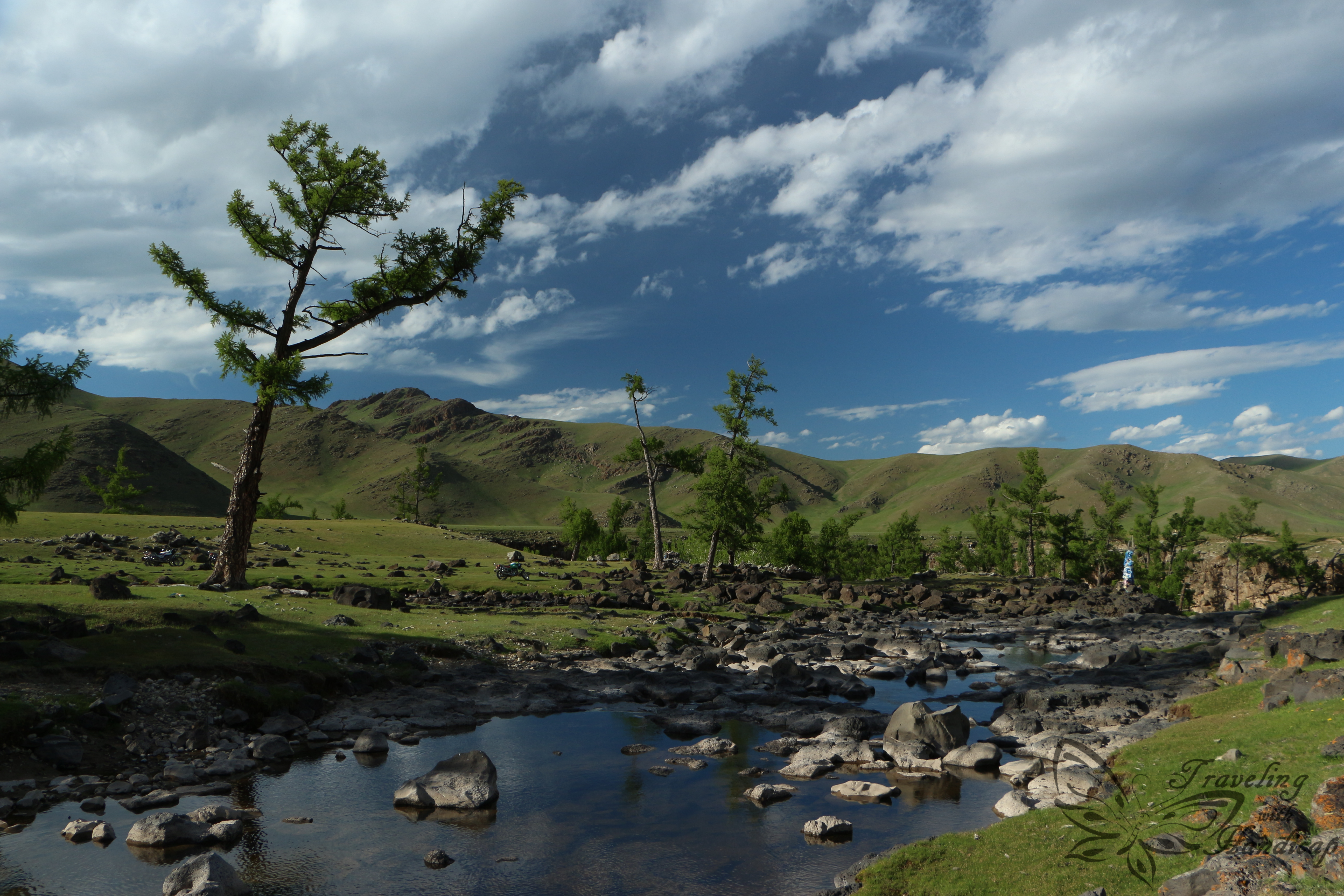
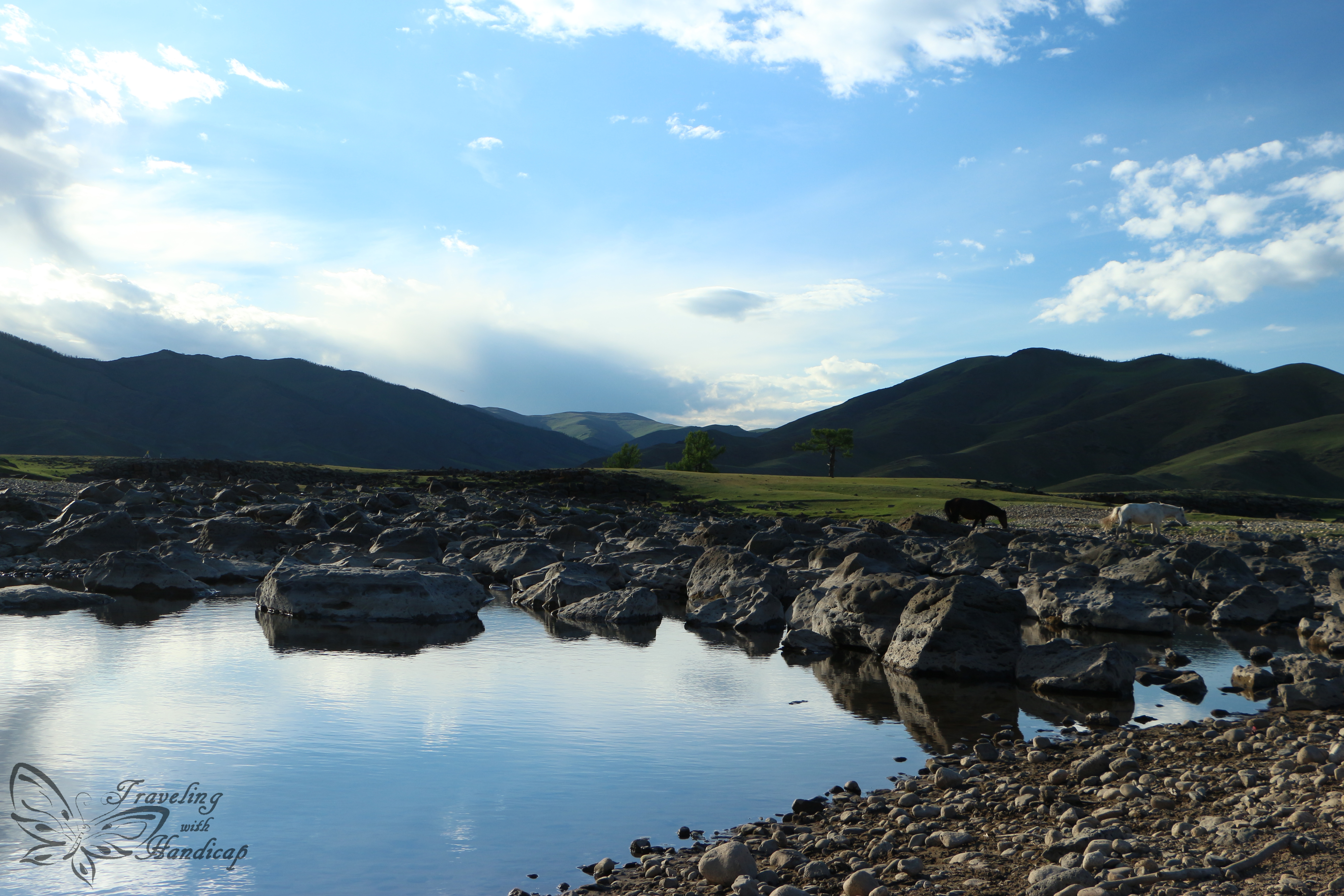

Horseback Riding in Orkhon Valley
After staying close to the waterfalls for one night, we explored the area from a horseback for the next two days. We got some protectors for the lower legs provided and were introduced to the Mongolian way of using reins. Afterwards, I got some help by being lifted on the horseback. Honestly, I was surprised how well I was still able to sit on the horse. We didn’t gallop, the horses didn’t want to take up some speed as they had to leave their home area. After a little lunch-break, I was provided a Mongolian whip to get my horse more engaged, and it worked! Apparently, the horse reacted to the presence of the whip, I didn’t have to use it often. Having the whip and enough experience with my horse, I felt safe enough to speed up and even gallop.
After a few hours of riding, we arrived in an impressive area of the valley where we would spend the night. The family we stayed with had a flock of yaks and provided different yak products to try. They had three nice kids, two boys and a girl. The boys were shy, whereas the girl was connecting to us. We could only communicate with sign language, though. I shared some nut-mix with the kids, who picked out all the raisins, leaving the nuts behind. Thanking me for the raisins, the girl gave me a baby yak to hold. How cute! The baby yak had an injured leg and therefore didn’t stay with the flock.
On the next day, we went all the way back on the horses. This time, the horses enjoyed galloping, since it was their way home. We spent another day at the Ger close to the waterfall before leaving the valley for the Tuvkhun monastery.



Tuvkhun Chiid
In 1648, the 14-year-old Zanabazar established the Tuvkhun monastery. He was the first Javzandamba Khutagt, the spiritual head of Mongolian Buddhism. He determined the location on the Shireet Ulaan Uul mountain (2,600 m above sea-level) as auspicious. We had to walk through a forest to reach the monastery at the hill. In contrary to the dry Gobi, we experienced colorful flowers in grass and trees of different shades of green. What a difference in landscape!
The monastery was quite small, restored in 1773 as well as in 1997 from the Stalinist purges (in the 1030s). We walked through the monastery buildings and climbed the rock afterwards. What a panoramic view! According to Mongolian Buddhism belief, there is an area which is restricted to only men. I asked our male companions to take some photos and share with us girls what we are not allowed to enter in person. The actual reason for the restriction was not the discrimination of women, but instead, to have a space to discuss without bringing their wives who could be spies for somebody else.
Our night close to the monastery was special. We experienced our first thunderstorm and realized how non-protected we are with respect to lightnings. The thunderstorm didn’t pass directly upon us, some light rain did. Later during the day, we saw a beautiful rainbow kissing the smooth hills.
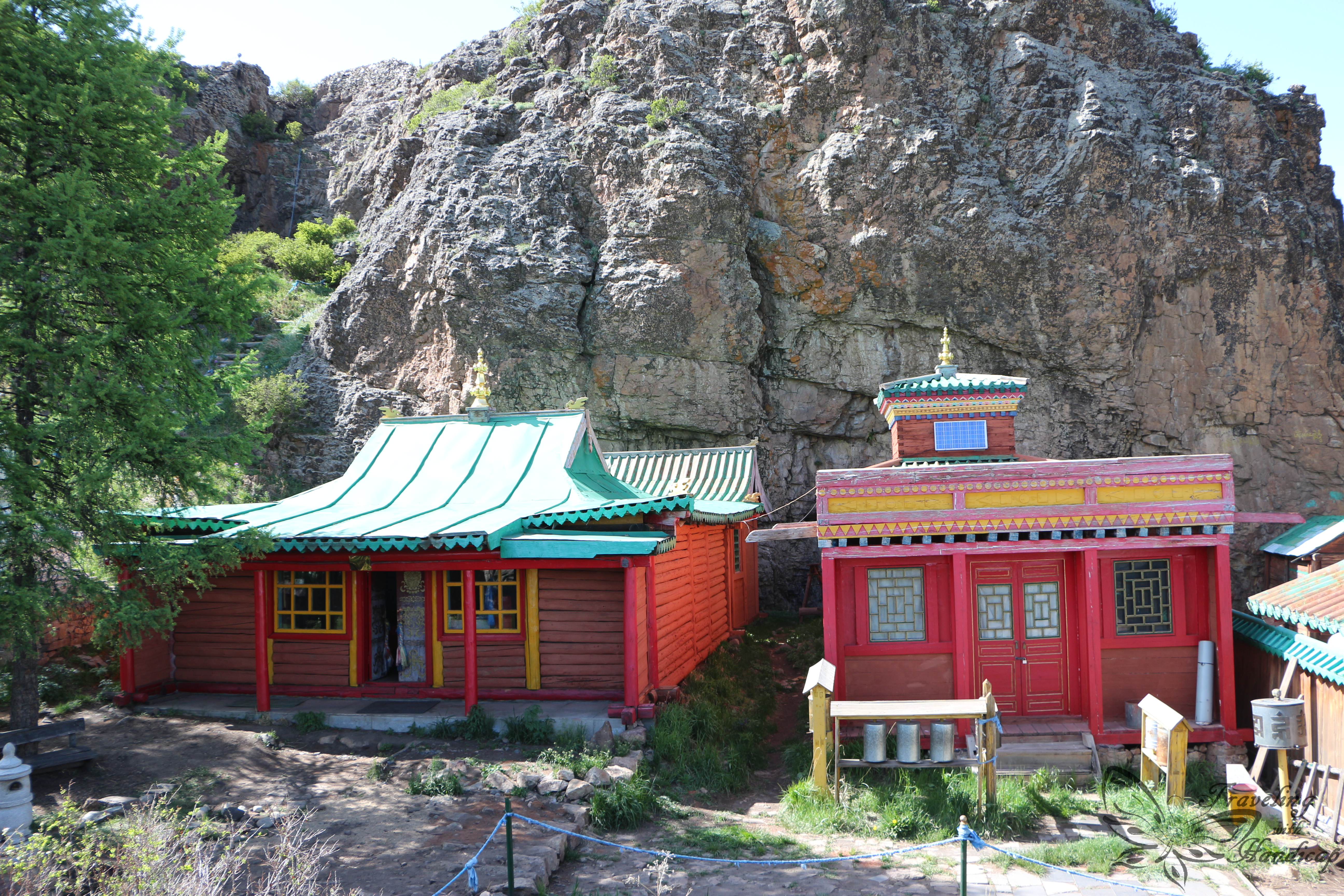

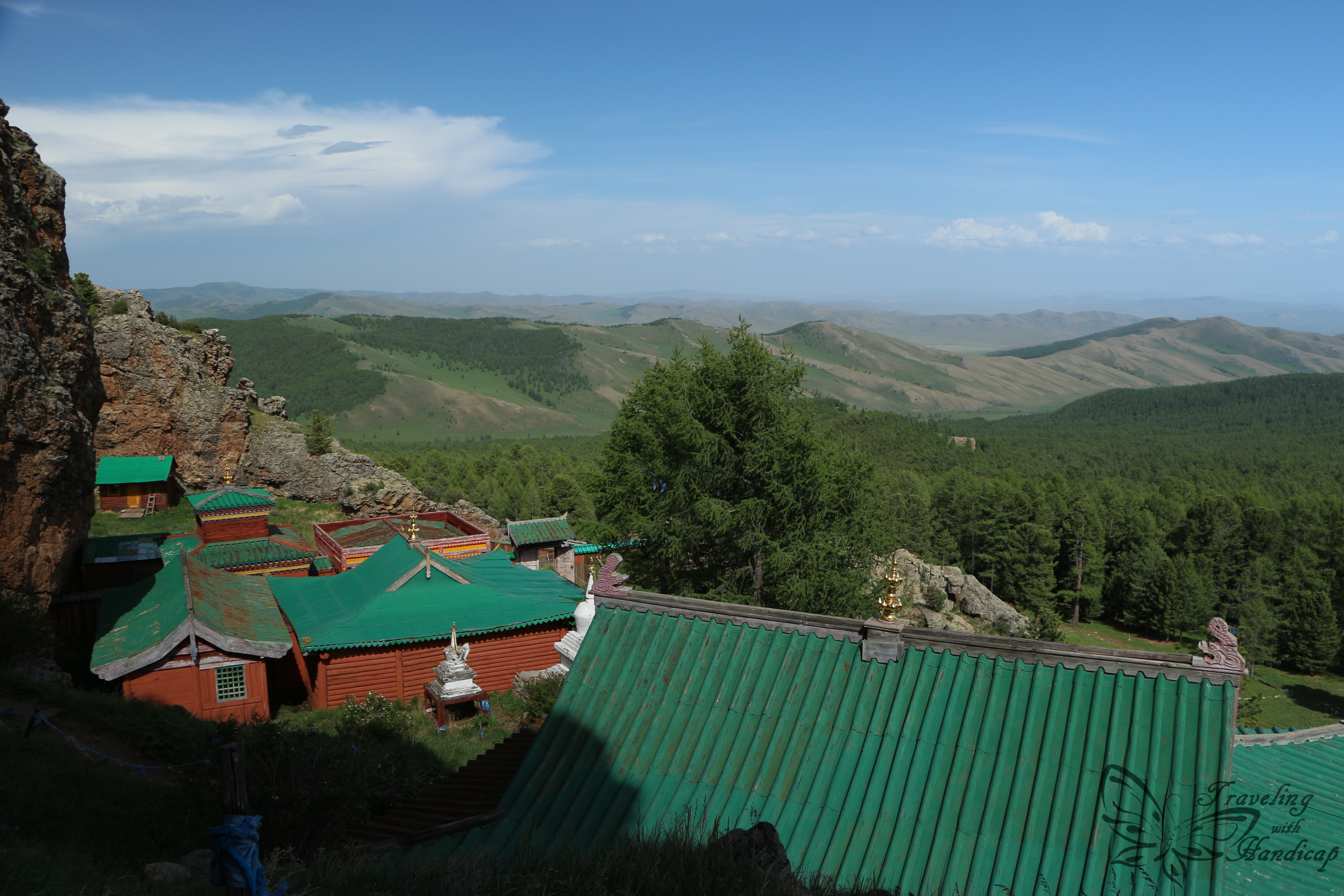

Tsenkher Hot Springs
We started driving in the morning and stopped at a building called Khangai Resort. Vampy left us waiting at the car and when she was back, she provided us two keys. What a surprise, the hot springs were actually not only hot springs. We were staying in a Resort with pools containing water of the hot springs! I couldn’t imagine before how happy I would be about a proper shower! Our Gers consisted of properly equipped beds including bedding, plugs and a lamp. We stayed in this Resort for the whole day, it was quite relaxing after so many hours in the vans, on worse than bumpy roads.
My first action was a proper shower, the first one after 10 days (excluding the cold water wash in the Olkhon Valley). Afterwards, I went closer to the springs (86° C) with the Italian guy, to check them out. This was a bad idea, though, there were hundreds of mosquitoes just waiting for stupid tourists like us. The entire group of us, both my tour group and the two British people including their and our guide and drivers, stayed in the pools until very late at night. We brought pre-mixed bottles with alcoholic drinks (more secure than open cans) to play games, in a mix of different languages, how much fun!
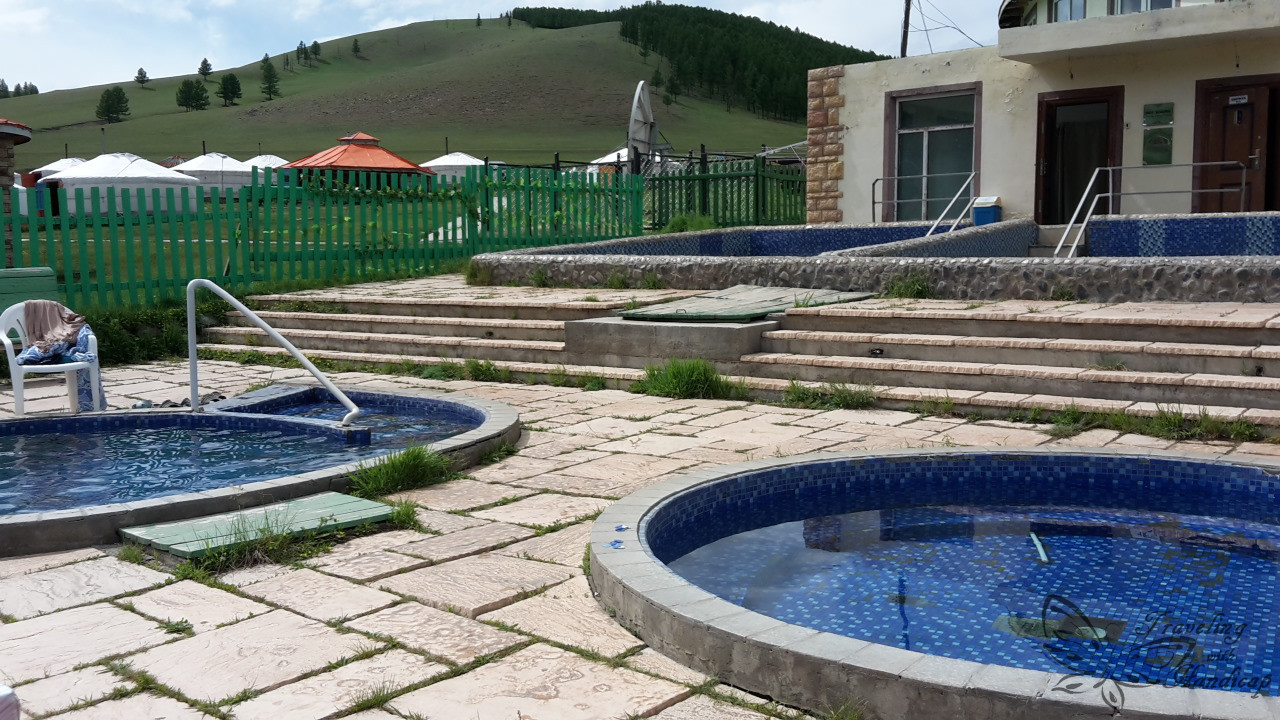
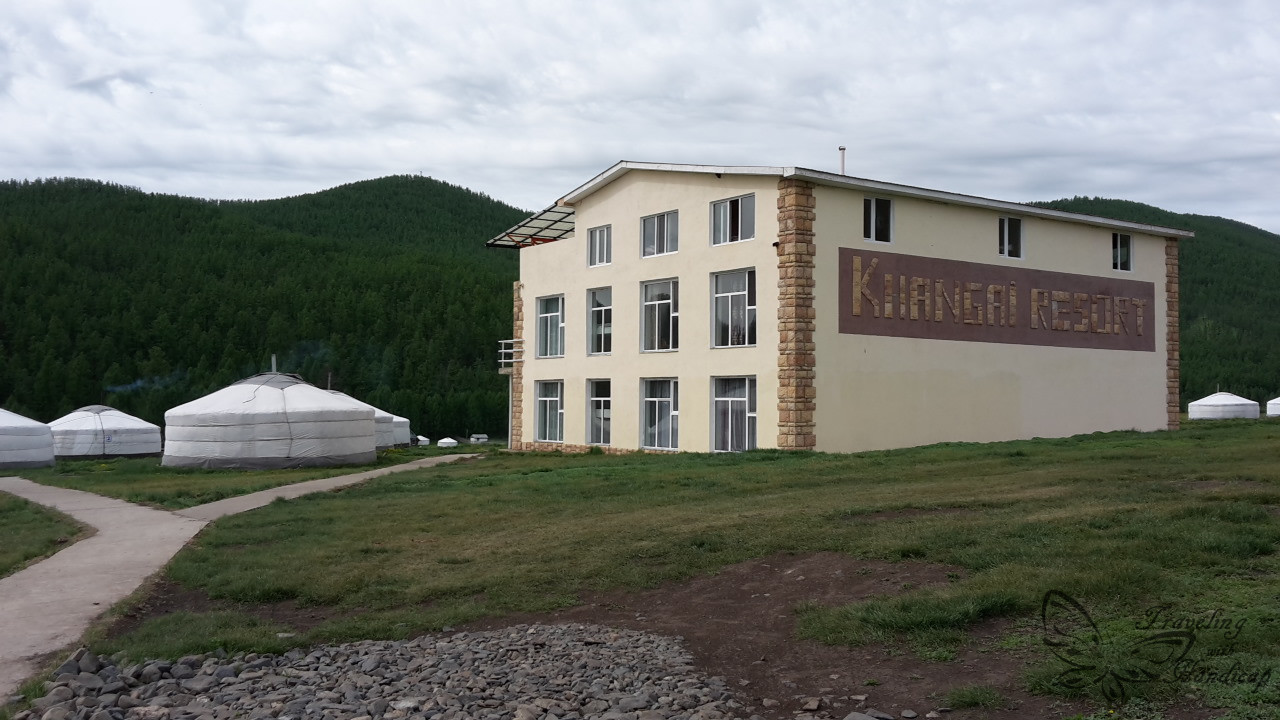


Karakorum and Khugnu Tarna
Waking up quite relaxed, we continued to Karakorum, one of the most important cities in the history of the Silk Road. Genghis Khan founded Karakorum in 1220, it’s development as capital of the Mongol Empire occurred under his son Ugudei in the 1230s. We visited the Erdene-Zuu monastery as well as the museum of Karakorum. The monastery is definitely worth checking out. It includes a museum as well as remaining praying halls. During our visit, we got the opportunity to watch a procession of monks welcoming a higher-ranked monk from Tibet. Adjacent to the monastery, there have been excavations to develop a plan of the huge size of ancient Karakorum.
We did not only visit remnants of the former Mongol Empire, we also dressed like the people of Genghis Khan’s time. We were told Mongols would not smile on pictures and tried it ourselves – what a challenge! Afterwards, I also hold an eagle on my arm. This magnificent bird has a huge wingspan and is really heavy to hold. We stayed at a Ger camp at the border of current Karakorum. Within this camp, we got the chance to listen to some Mongolian singers from the city, giving a little concert using overtone singing and traditional instruments. Mastering this skill of singing is a true achievement! Following this link, you may listen to a YouTube video on overtone singing.
For our last night of the trip, we stayed with a family in the Khungnu Tarna region. This family also had some horses, and we went out for a sunset ride. This time, we got traditional Mongolian costumes provided. Given our experience from the two days riding within the Orkhon Valley, we galloped quite a lot. Sadly, we drove back to Ulaanbaatar, passing by the Khungnu Khan natural reserve.




Farewell party in Ulaanbaatar
We couldn’t end the tour just by arriving back at the hostel in Ulaanbaatar, we agreed to meet for dinner in an Indian restaurant. Vampy, our guide, also brought some friends. After dinner, we went to a Karaoke bar, which provides plenty of English songs on its playlists. We continuously extended the booking of our room until we were asked to leave in the early morning hours the next day. What a fun end for such a life-time-experience tour.
Mongolian food experience
Within Ulaanbaatar
Entering the State Department Store to exchange some money, I immediately continued to check out the supermarket. I was really surprised about the variety of German products, mostly from Edeka brands. The majority of sweets were in packaging with the original German text, not even an English or Russian translation of the cover. You can even buy original “Blüten-Honig”. However, there was one mismatch: the brand of beer called “Bavaria” had plenty of different flavors, and, even worse, most of them with 0.0 % of alcohol. How would this fit to Bavaria? 😀
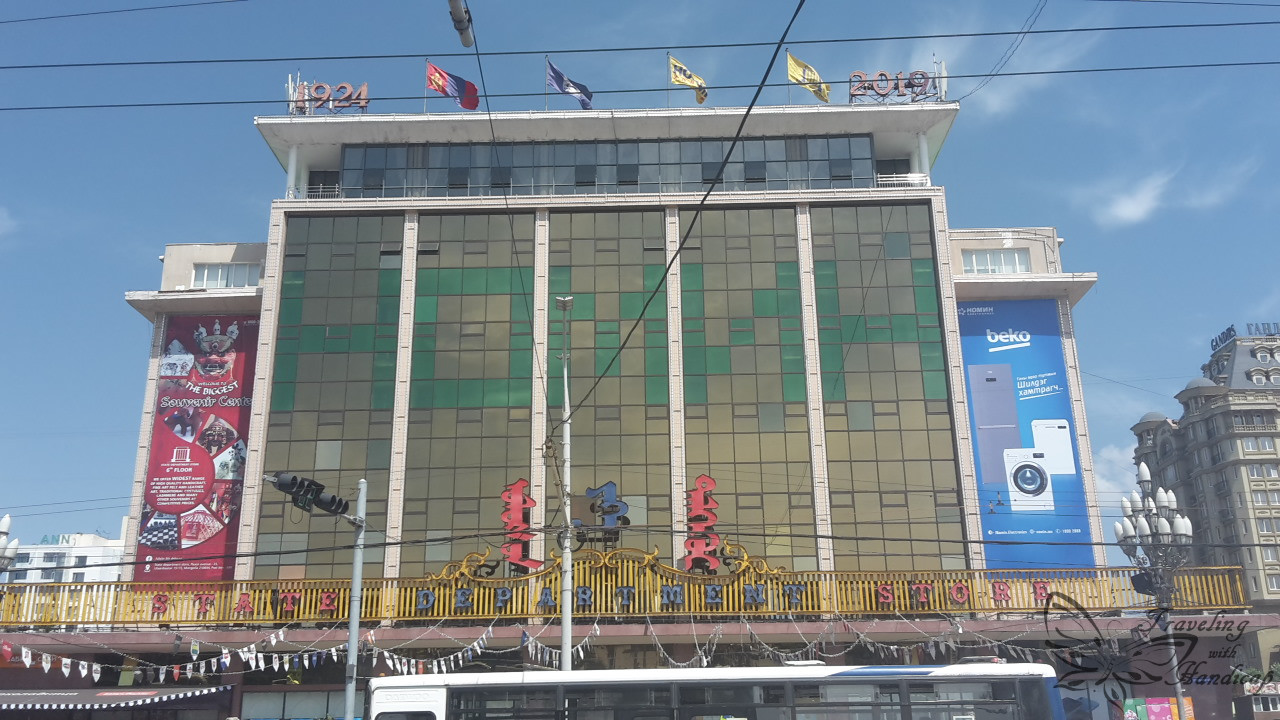

Within the city center of Ulaanbaatar, you find restaurants from a wide range of nationalities. Indian, German Brezen, Mexican, Italian, American etc. I identified a comparatively large number of Korean restaurants. During the tour, I learned that many Mongolians go to South Korea to work, as there are often better opportunities.
During the tour through the Gobi and Central Mongolia
If you are not in Ulaanbaatar, the number of restaurants is very low. Only in villages, you might get the chance for a Mongolian restaurant, which might be a roadhouse or just a Ger tent with some tables inside. The dishes within those restaurants are very similar. You will mostly get rice with a lot of meat, a tiny extra of veggies, and some spices. Sometimes, you might get pasta instead of rice, or hot soups with meat and veggies as ingredients, or meat-dumplings. Keep in mind that Mongolians mostly don’t understand why someone wants to eat vegetarian, it is rather difficult to make them understand to leave out the meat.
During the tour, we often got self-made dishes. Breakfast was easy and healthy, consisting of milk products from local animals, some bread (toast), fruits and leftovers from dinner. Lunch or dinner were warm dishes. Our Chef and tour guide prepared meals which were different from the typical Mongolian restaurants. Whenever we stopped in a village, our guide went into some stores to buy vegetables, salad, and eggs, sometimes also rice, pasta, and fruits. The ingredients were not different to those we know in Europe, only the way of preparing and spicing them gave the dishes some Mongolian taste. I really enjoyed the food we got, it was enough, filling, and never too much.

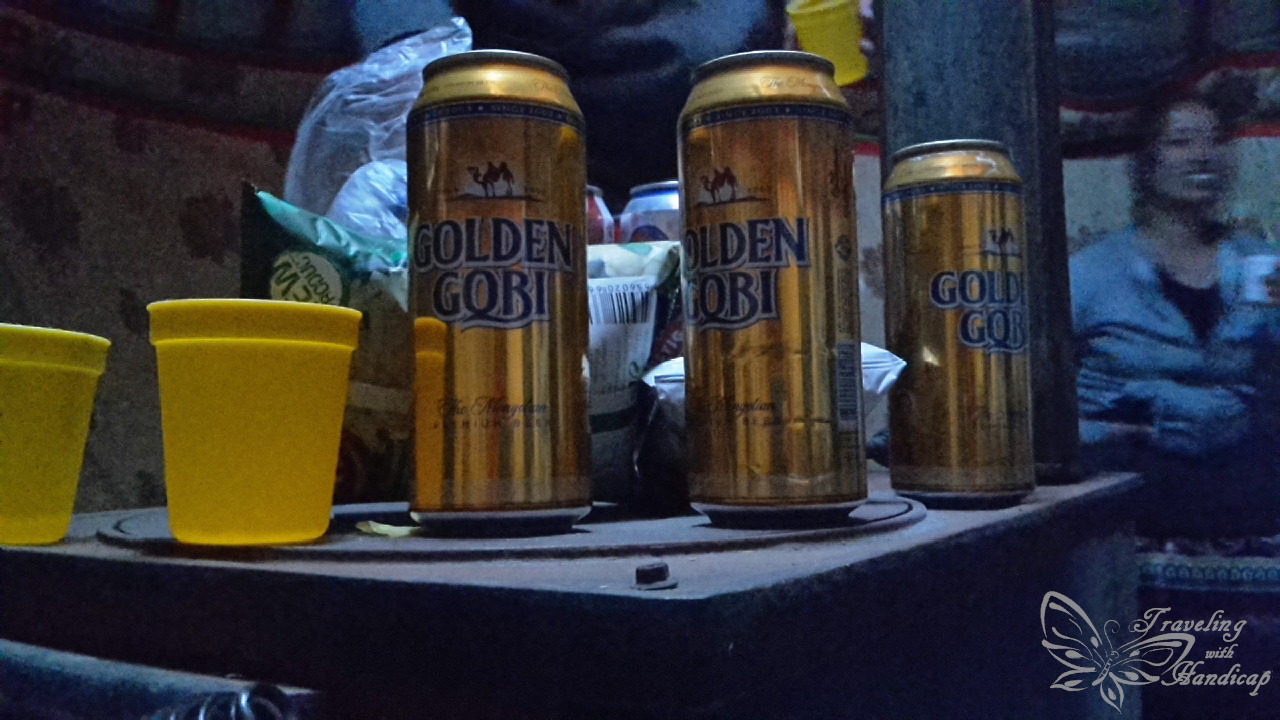
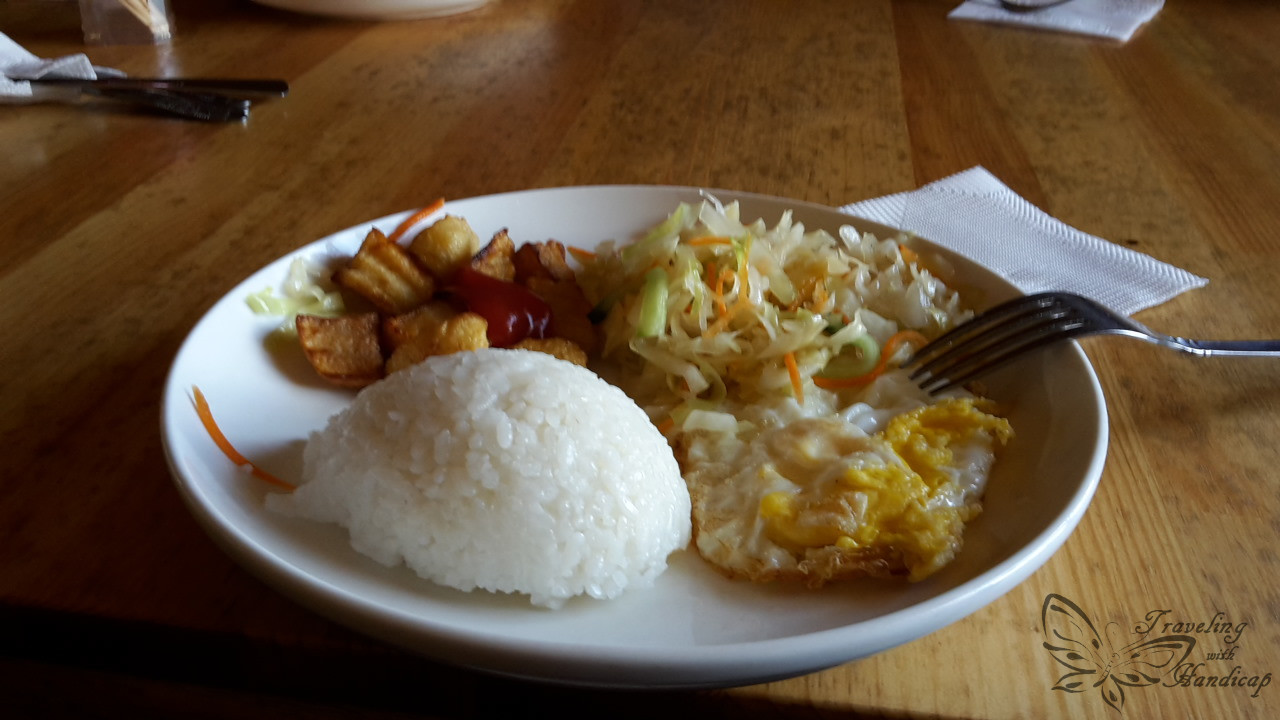
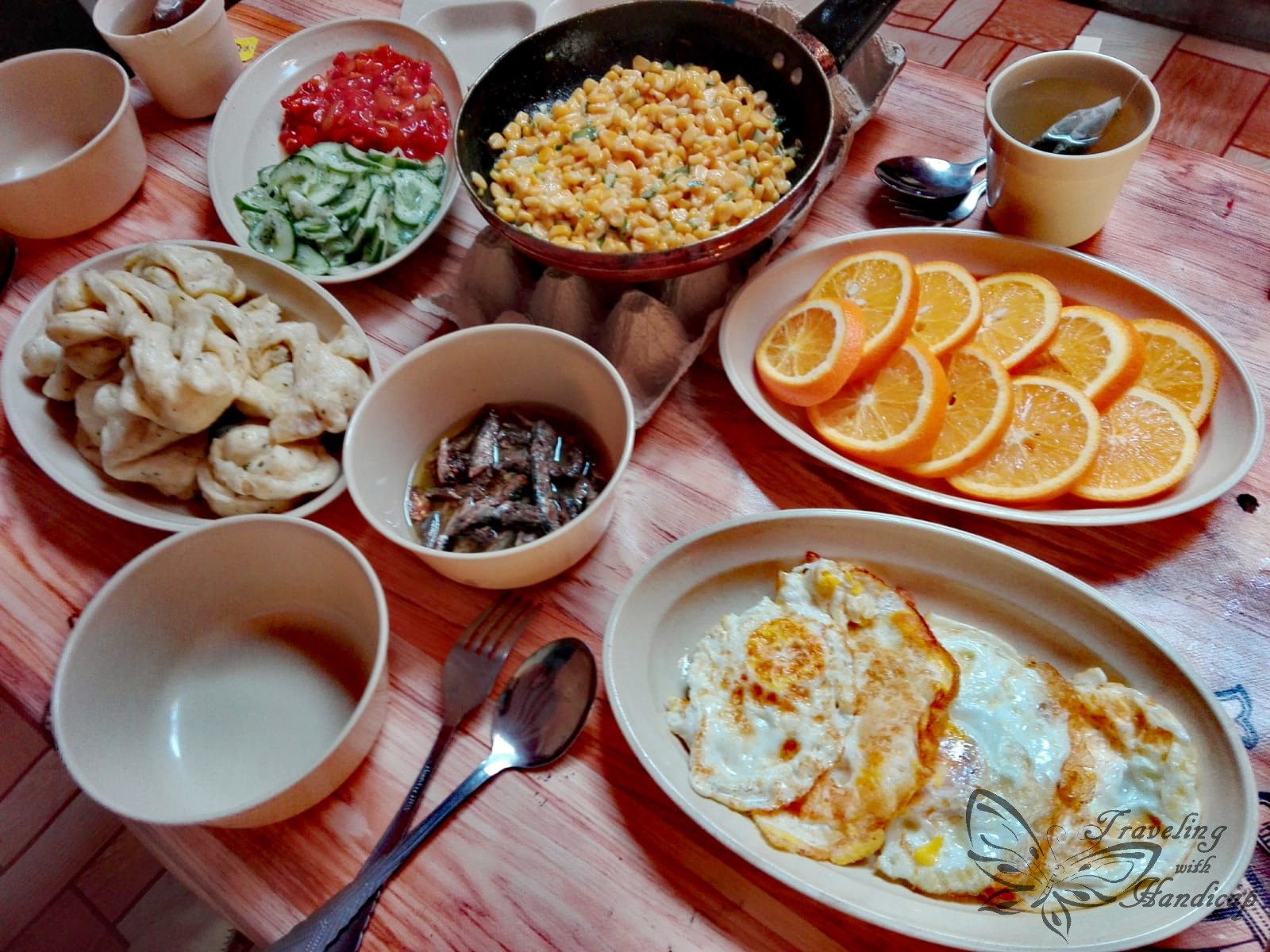
True Mongolian nomad food
Whenever we stayed with families, I watched the Mongolians preparing their own food in the Ger tents. There is a fireplace in the middle of each ger. A huge bowl is placed on top of the fire and all ingredients of the dish (almost meat-only) are put into the bowl until they are ready to be eaten. Milk is cooked and processed in the same manner. The little hole at the central top of the Ger tent ensures the heat to conduct away. The hole is usually covered if nobody is cooking.
Mongolians drink a lot of milk, one specialty is the Arkhi (a liquor made from airag, fermented milk brandy). I only tried a little zip of Arkhi once, though I didn’t like it. Apart from Milk, you can easily buy teabags in every store. True juices are common within Ulaanbaatar, not as much on the countryside. However, no matter where you are, you will never run out of alcohol, you literally get it everywhere.
